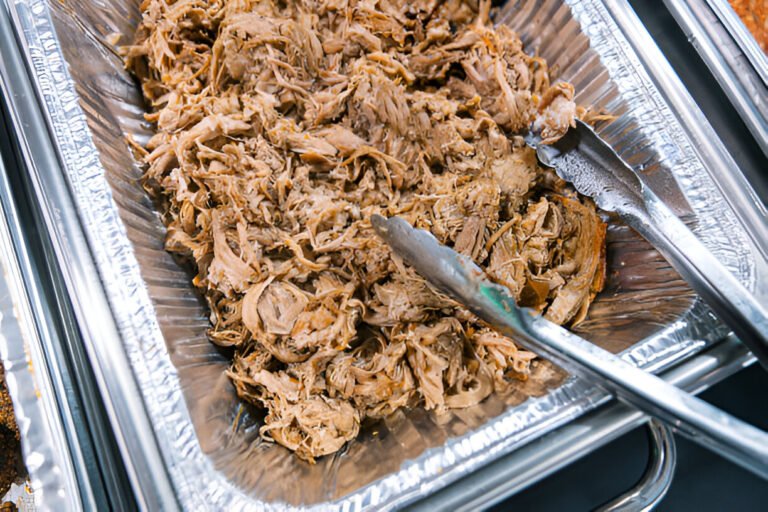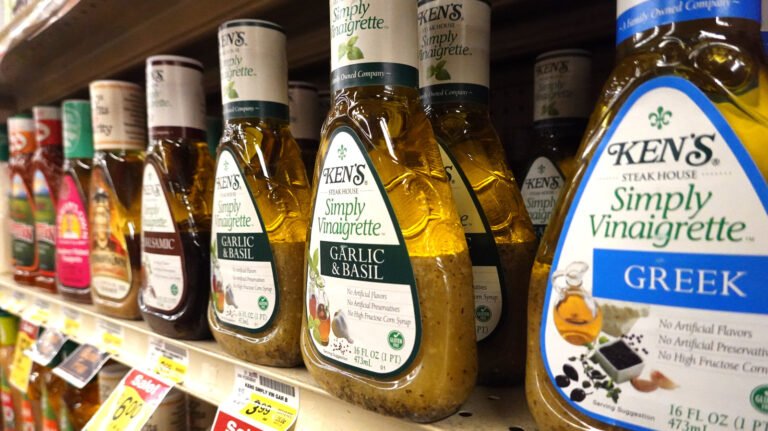Butter Beans vs. Great Northern Beans: What’s the Difference?
Butter beans and Great Northern beans are favorite types among the plethora of beans varieties, which are considered a staple in numerous households. Despite the multitude of bean options available, these two varieties continue to be sought-after choices.
While they may look similar, there are some critical differences between these two types of beans, including their taste, texture, and nutritional value.
Our team checked out butter beans vs. Great Northern beans, exploring their similarities and differences and providing tips on how to use each variety in your cooking.
What Are Butter Beans & Great Northern Beans?

Butter beans [1] and Great Northern beans are legume family members, which include beans, lentils, and peas.
Butter beans are a type of lima bean that are larger and flatter than regular lima beans, with a creamy texture and buttery flavor. They are often used in Southern-style dishes such as succotash or baked beans.
“My diet mostly comprises whole-grain cereals, legumes, beans, lentils. Lots of cooked, baked, or steamed vegetables. Lots of spices like curcumin or cumin that help aid digestion. Some superfoods.”
– Adam Ondra, Czech Rock Climber
On the other hand, Great Northern beans are smaller and rounder than butter beans, with a mild flavor and slightly grainy texture.
They are a common ingredient in casseroles, soups, and stews and are often used as a substitute for navy or cannellini beans.
| Also Read: What Does Red Bean Taste Like? |
What Are The Differences In Taste & Texture?

- Taste: Butter beans have a creamy, buttery flavor with a slightly nutty taste. Great Northern beans, on the other hand, have a milder taste with a slight graininess.
- Texture: Butter beans have a soft, creamy texture with a slight firmness, making them ideal for dishes with a smooth and velvety texture. Great Northern beans, on the other hand, have a slightly grainy texture that holds up well in soups and stews.
- Cooking Time: Butter beans typically take longer to cook than Great Northern beans due to their larger size and creamier texture.
- Culinary Uses: Butter beans are often used in Southern-style dishes such as succotash, baked beans, and stews, while Great Northern beans are commonly used in casseroles, soups, and stews, as well as salads and dips.
- Availability: Butter beans are less commonly found in grocery stores than Great Northern beans [2], widely available in canned and dried forms.
How Do You Cook Butter Beans & Great Northern Beans?

Butter Beans:
- Soak the beans in cold water for at least 8 hours or overnight.
- Drain and rinse the beans, then add them to a pot with enough water to cover them by about an inch.
- Bring the water to a boil, then reduce the heat and simmer the beans until tender, about 45 minutes to 1 hour.
- Drain the beans and use them in your desired recipe.
Great Northern Beans:
- Soak the beans in cold water for at least 8 hours or overnight.
- Drain and rinse the beans, then add them to a pot with enough water to cover them by about an inch.
- Bring the water to a boil, reduce the heat, and simmer the beans until tender, about 30 to 45 minutes.
- Drain the beans and use them in your desired recipe.
| Also Read: Can You Can Green Beans Without A Pressure Cooker? |
Nutritional Differences Between Butter Beans & Great Northern Beans
- Calories: A 1/2 cup serving of cooked butter beans contains approximately 110 calories, while the same serving size of cooked Great Northern beans contains around 120 calories.
- Protein: Both types of beans are a good source of protein, with 1/2 cup of cooked butter beans containing around 7 grams of protein and the same serving size of cooked Great Northern beans containing approximately 8 grams of protein.
- Fiber: Both butter beans and Great Northern beans are high in fiber, with 1/2 cup of cooked butter beans containing around 6 grams of fiber and the same serving size of cooked Great Northern beans containing approximately 6.5 grams.
- Fat: Both types of beans are low in fat, with 1/2 cup of cooked butter beans containing less than 1 gram of fat and the same serving size of cooked Great Northern beans containing approximately 1 gram of fat.
- Vitamins and minerals: Both butter beans and Great Northern beans are rich in essential vitamins and minerals, including iron, potassium, and folate. Butter beans are also a good source of Vitamin B6, while Great Northern beans contain more calcium and magnesium than butter beans.
| Related Post: Simple Steps To Freeze Green Beans Without Blanching |
Price Comparison: Are Butter Beans or Great Northern Beans More Affordable?
When comparing the prices of butter beans and Great Northern beans, there is often a noticeable difference. Butter beans tend to be 10-15% more expensive than Great Northern beans, largely due to their seasonal availability. Great Northern beans are available year-round and in larger quantities, making them more affordable. In contrast, butter beans are often harvested in smaller quantities and are more susceptible to price fluctuations depending on the time of year.
Price Factors:
- Seasonality: Butter beans are often in higher demand during specific seasons, which can drive prices up.
- Packaging: Bulk packaging typically reduces the cost per unit. Great Northern beans, available in larger bags or cans, may offer better deals.
- Region: Costs vary by region depending on local growing conditions and transportation fees.
In general, Great Northern beans offer a more budget-friendly option, especially for those purchasing in bulk. However, the richer flavor and texture of butter beans may justify the extra cost for some dishes.
Cooking Times and Preparation: What You Need to Know
When it comes to cooking butter beans and Great Northern beans, understanding the difference in preparation is key. Great Northern beans tend to take a bit longer to cook due to their firmer texture, with 52% of chefs reporting they need more time than butter beans. Typically, Great Northern beans require about 1-1.5 hours of simmering after soaking, while butter beans, being softer, cook in about 45 minutes to 1 hour.
Cooking Tips:
- Soaking: Both types of beans benefit from soaking overnight, reducing cooking time by half. If you’re short on time, a quick soak method—boiling the beans for 2-3 minutes and then letting them sit for an hour—works well.
- Stovetop Cooking: Use 3 cups of water for every 1 cup of beans and bring to a boil. Then, reduce the heat to a simmer.
- Slow Cooker: For both beans, use a low setting for 6-7 hours or a high setting for 3-4 hours.
Properly soaking and cooking these beans ensures a flavorful and tender result.
FAQs on Butter Beans vs Great Northern Beans
Why are they called great northern beans?
Great Northern beans are called so because they were initially grown in the northern United States, particularly in the Midwest. They are believed to have been developed in the mid-1800s in the region that is now Minnesota, North Dakota, and Michigan. The name Great Northern was likely chosen to reflect the beans’ northern origin and popularity in the region.
What is a suitable replacement for butter beans?
Lima beans are a suitable replacement for butter beans, as they have a similar flavor and texture. Other alternatives include navy beans or cannellini beans.
Key Takeaways
While butter beans and Great Northern beans may look similar at first glance, they have distinct differences in taste, texture, and culinary uses.
Butter beans have a creamy, buttery flavor with a slightly nutty taste, while Great Northern beans have a milder taste with a slight graininess.
Butter beans have a soft, creamy texture, while Great Northern beans have a slightly grainy texture that holds up well in soups and stews.
Both beans are a good source of protein, fiber, and essential vitamins and minerals, making them a healthy and nutritious addition to any diet.
Whether you’re using them in Southern-style dishes like succotash, casseroles, or stews, knowing the differences between these beans can help you create delicious and satisfying meals for yourself and your family.
References:
- https://www.thespruceeats.com/what-are-butter-beans-5105145
- https://www.allrecipes.com/recipes/17026/fruits-and-vegetables/beans-and-peas/great-northern-beans/

Kathy is a restaurateur, artist, and blogger. After spending more than 10 years in the restaurant industry, she has decided to go digital and share her expertise and experience online.






